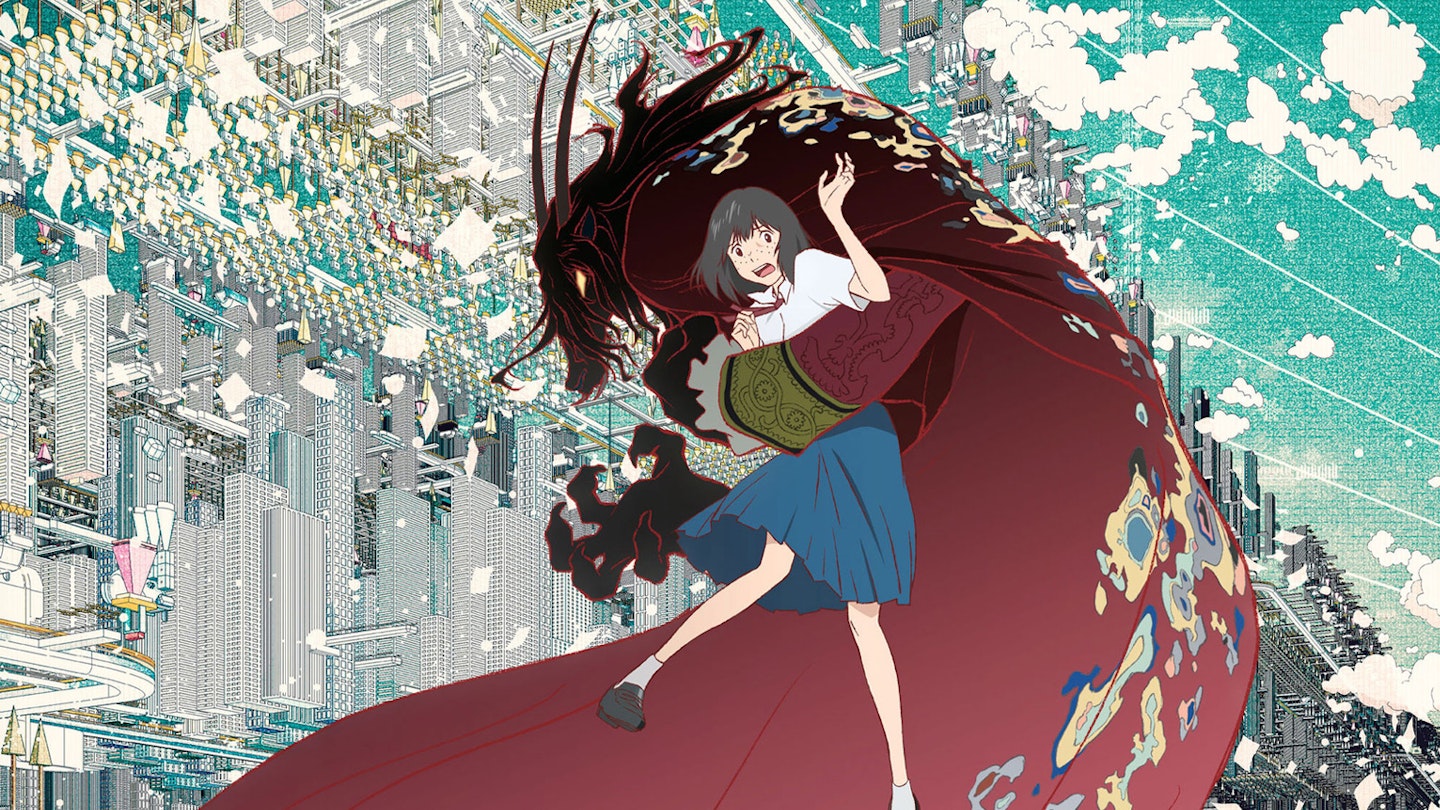Though centred on a teenager seemingly content to fade into the background amongst her peers, Belle itself is hardly lacking in ambition. It’s at once an homage to Beauty And The Beast, and a recollection of its creator’s greatest hits (Wolf Children, The Boy And The Beast, Mirai); a large-scale fantasy as well as a small-town coming-of-age drama, reflecting on the intertwining of teen anxiety and social media; an innovative piece of CG animation that blends with a more traditionally hand-drawn style. But it’s never overwhelming, as director Mamoru Hosoda arranges all these moving parts into a precise, exciting symphony.

Through his protagonist Suzu’s (Kaho Nakamura) story, Hosoda remixes Beauty And The Beast not just as a reflection on how teenagers can escape into internet communities but also on the broader subject of the role of the parent, and the pain that results when they are absent. Taking on the persona of ‘Bell’, Suzu, who has a fraught relationship with her father (Kōji Yakusho), becomes something of a halfway point between a V-tuber (an online entertainer who uses an avatar) and a pop star, her singing turning her into a viral sensation. Where other films might warn against the perils of this, Belle instead takes a humanist view of the internet, seeing it as a medium through which isolated and misunderstood souls connect. Not that the film ignores the risks — as Suzu encounters ‘The Beast’ (Takeru Satoh), it engages with the practice of doxxing (a cyber-attack that reveals a user’s true identity), and how corporate control of online spaces corrupts communities.
With its intense story, spectacular animation and catchy soundtrack, there’s an almost dizzying amount going on.
As with much of Hosoda’s work, Belle constantly has one foot in and one out of reality, the setting split between the real and digital worlds, the characters animated with traditional 2D in the former and CGI in the latter. In 2D, they appear more subdued and naturalistic, but very often offer outsized, cartoonish reactions. In 3D, the characters take on a fairy-tale appearance, while the world of ‘U’ itself appears as somewhere between a sprawling cityscape, a circuit board and a harp. There’s a constant push-and-pull throughout, between the 2D and 3D animation, the inner self and the external, it all feeding back into how the online space essentially doubles us, offering the chance to create a new image for oneself. That conceptual approach to the animation makes switching between the two worlds feel seamless.
With its intense story, spectacular animation and catchy soundtrack, there’s an almost dizzying amount going on. But Hosoda keeps it all on an even keel, employing recurring visual motifs, a precise rhythm and quieter, slice-of-life vignettes in the real world as room to breathe. It stumbles occasionally: while the nature of Bell and The Beast’s relationship aligns with Hosoda’s sensibilities perfectly on paper, the revelation of the latter’s identity feels clumsily executed. Still, the conclusion to which it leads is powerful, balancing its lavish fantasy imagery with moments of quiet observation and moving intimacy.

